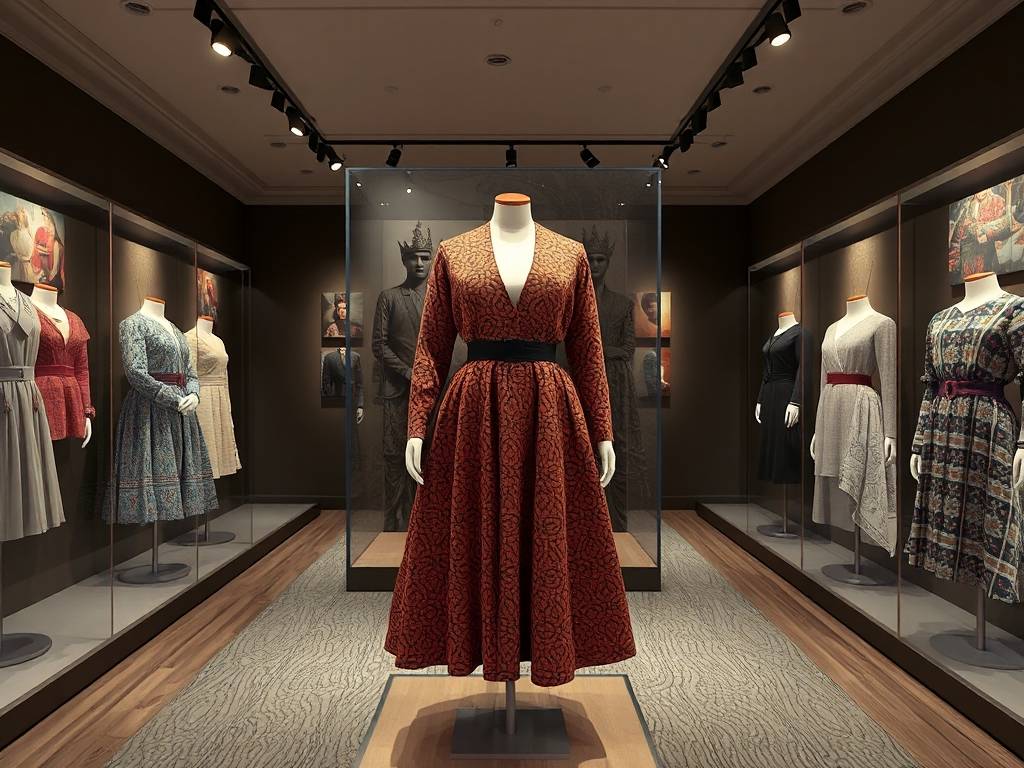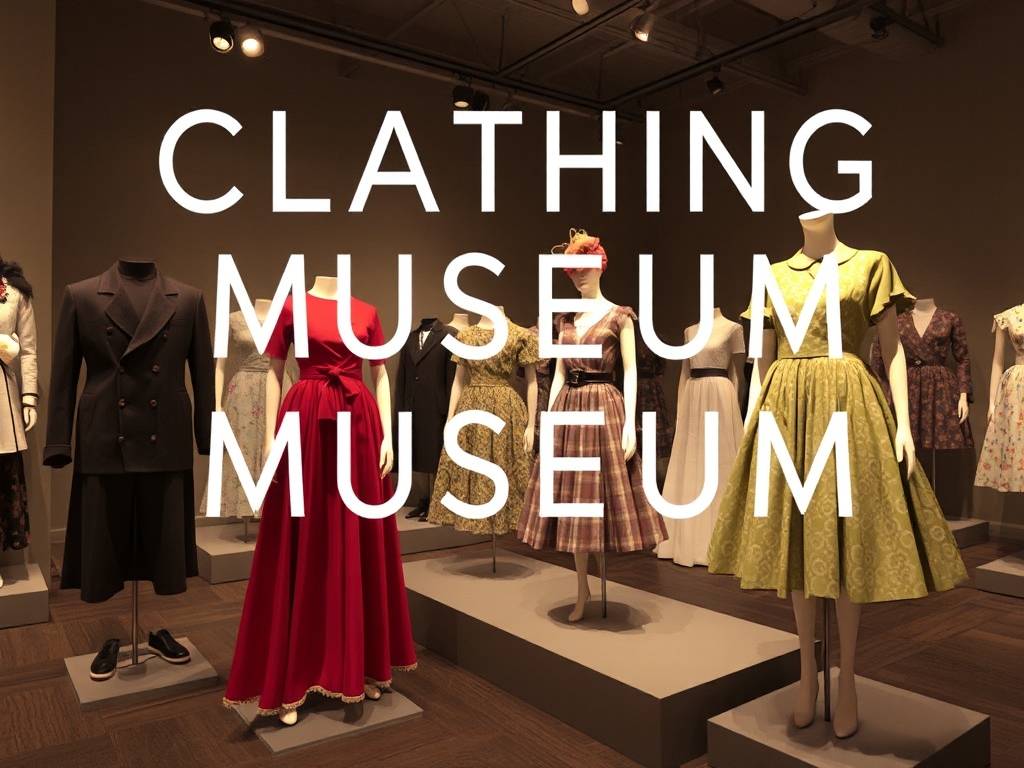Imagine slipping into a gown worn at the court of Louis XVI, feeling the rustle of heavy silk and smelling the faint, centuries-old scent of beeswax and perfume. Picture yourself walking through a 1920s speakeasy, the fringes on your flapper dress swaying to the rhythm of a jazz band you can almost hear. This is no longer the stuff of daydreams or static museum displays. This is the revolutionary experience offered by the Clothing Museum VR's latest and most ambitious update: the Fashion Eras Expansion.

For years, the Clothing Museum VR app has been a pioneer in digital fashion preservation, allowing users to inspect historical garments in 3D. But the Fashion Eras Expansion is a quantum leap. It doesn't just show you clothes; it immerses you in the worlds that created them. We've moved beyond the display case and into the bustling streets, grand ballrooms, and intimate dressing rooms of history. This expansion is built on a simple but powerful idea: to truly understand a garment, you must understand the life it led. Who wore it? Where did they go? What did it feel like to move in it? We’ve dedicated thousands of hours of research, 3D modeling, and historical consultation to answer these questions for you.
The core of this expansion is our proprietary "Living Wardrobe" engine. Traditional 3D models are static. Our new engine simulates the physics of historical textiles with astonishing accuracy. The heavy, structured drape of Victorian bombazine, the fluid shimmer of 1930s bias-cut satin, the rigid architecture of an Elizabethan farthingale—each material behaves as it would in reality. When you move your virtual avatar, the clothes respond. They sway, crease, and flow, making the historical experience tactile and believable. Furthermore, our "Sensory Soundscapes" layer in ambient noises specific to each era: the clatter of carriage wheels on cobblestones, the murmur of a Georgian drawing-room, the crackle of a hearth fire. This multi-sensory approach is key to creating a truly empathetic and unforgettable connection to the past.

Let's step into the time machine and explore the eras now at your fingertips.
Our journey begins in the late 15th century, at the dawn of the Renaissance. You find yourself in a sunlit Florentine courtyard. The air is warm, and you are dressed in the fashions of the Italian elite. For men, this might mean a fitted doublet and hose, garments that emphasize the human form. You can feel the snug fit of the doublet across your chest and the distinctive silhouette it creates. For women, the experience is one of structured elegance. You can slip into a gamurra, an underdress, and layer over it a luxurious cioppa, noting how the rich, heavy velvet hangs from the shoulders. The goal here is to appreciate the birth of fashion as a form of personal and political expression, where fabric wealth and cut were direct indicators of status and power.
Next, we transport you to the absolute peak of sartorial extravagance: the Court of Versailles in the 1780s. This experience is less about putting on a single item and more about undergoing a transformation. You begin in a dressing room, where you are assisted by virtual valets or ladies-in-waiting. The process of assembling an ensemble for a courtier is a slow, deliberate ritual. For men, you will don the iconic habit à la française, a three-piece suit comprising a coat, waistcoat, and breeches. Notice the exquisite embroidery, which could take artisans hundreds of hours to complete. For women, the experience is centered on the robe à la française. You will feel the weight of the wide panniers extending your silhouette sideways, the layers of petticoats, and the final placement of the elaborate gown itself. The pinnacle of this experience is standing in the Hall of Mirrors, surrounded by other avatars in equally breathtaking finery, understanding the immense social pressure and performance that clothing represented in this gilded cage.
From the opulence of the French court, we make a dramatic shift to the gritty and transformative energy of the Industrial Revolution in 1880s London. The contrast is intentional and profound. Here, fashion is about social stratification and new possibilities. You can experience two starkly different realities. First, step into the shoes of a wealthy Victorian lady. You will feel the restrictive embrace of a tightly-laced corset and the heavy, trailing skirts of a day dress. The silhouette is one of pronounced curves, achieved through complex underpinnings. Then, switch perspectives to that of a new generation of office workers—the "typewriters" or secretaries. Their attire, a tailored skirt and blouse, represents a new form of functional, respectable fashion for women entering the workforce. It's a powerful lesson in how clothing both liberated and constrained.
No fashion era signifies modern liberation quite like the 1920s. Our "Roaring Twenties" experience is set in a hidden, vibrant speakeasy. The atmosphere is electric with the sound of a Charleston band. The clothing here is all about movement and rebellion. For women, the iconic flapper dress is a revelation. As you move your avatar, you can see the long fringes swing and shake, defying the rigid modesty of previous generations. The dress is loose, the hemline is shockingly high, and the overall feeling is one of exhilarating freedom. You can accessorize with a cloche hat and long strands of pearls, completing the look of the modern, independent woman. For men, the shift is towards relaxed, yet sharp, suits with trousers that are, for the first time, creased and cuffed. This era is a joy to inhabit, a celebration of youth culture and changing social mores.
Finally, we arrive in the revolutionary 1970s, a decade of explosive diversity and self-expression. This era is not defined by one single look, but by a clash of subcultures. Our "Studio 54" experience allows you to experiment with this glorious chaos. One moment, you can be dressed in the sleek, disco-inspired glamour of a halter-top and wide-leg pantsuit, covered in shimmering lamé. The next, you can change into the rugged, anti-establishment look of the burgeoning punk scene, trying on a ripped t-shirt and a leather jacket customized with virtual safety pins. The freedom to mix and match from these opposing styles highlights how fashion in the 20th century finally shattered into a million fragments, allowing the individual to become the curator of their own identity.
To make your journey through time as seamless and enriching as possible, we've designed an intuitive interface. Upon launching the expansion, you are greeted by a beautiful, interactive timeline. You can scroll through the centuries and click on any era that piques your interest. Each era features a "Wardrobe" section where you can mix and match individual garments, and a "Live Scenario" which is the fully immersive environment we've described. A new "Social Time Travel" feature allows you to visit these spaces with friends, turning historical exploration into a shared adventure. For those who want to go deeper, our integrated "Curator's Notes" provide pop-up information on fabric origins, construction techniques, and the social significance of each piece, all accessible without breaking the immersion.
We anticipate you might have a few questions. The Fashion Eras Expansion is available as a premium downloadable content pack for all existing Clothing Museum VR app users on all major VR platforms. It requires a standalone VR headset for the full immersive experience, though a limited 360-degree gallery view is available on desktop. Our team has worked meticulously with historians and textile conservators from institutions like the Victoria & Albert Museum and the Kyoto Costume Institute to ensure historical accuracy in every stitch and silhouette. We are committed to expanding this living museum, with future eras like the Romantic 1820s and the Austere 1940s already in active development.
This expansion is more than an update; it's a new door to the past. It’s for the student who finds textbooks dry, the designer seeking inspiration from the masters, the novelist researching a character's world, or simply anyone who has ever looked at a painting and wondered, "What would that have felt like?" We are moving beyond looking at fashion history to living it. The mannequins have stepped down from their pedestals, and the invitation is yours. Your front-row seat to the greatest fashion show in history is waiting.


















